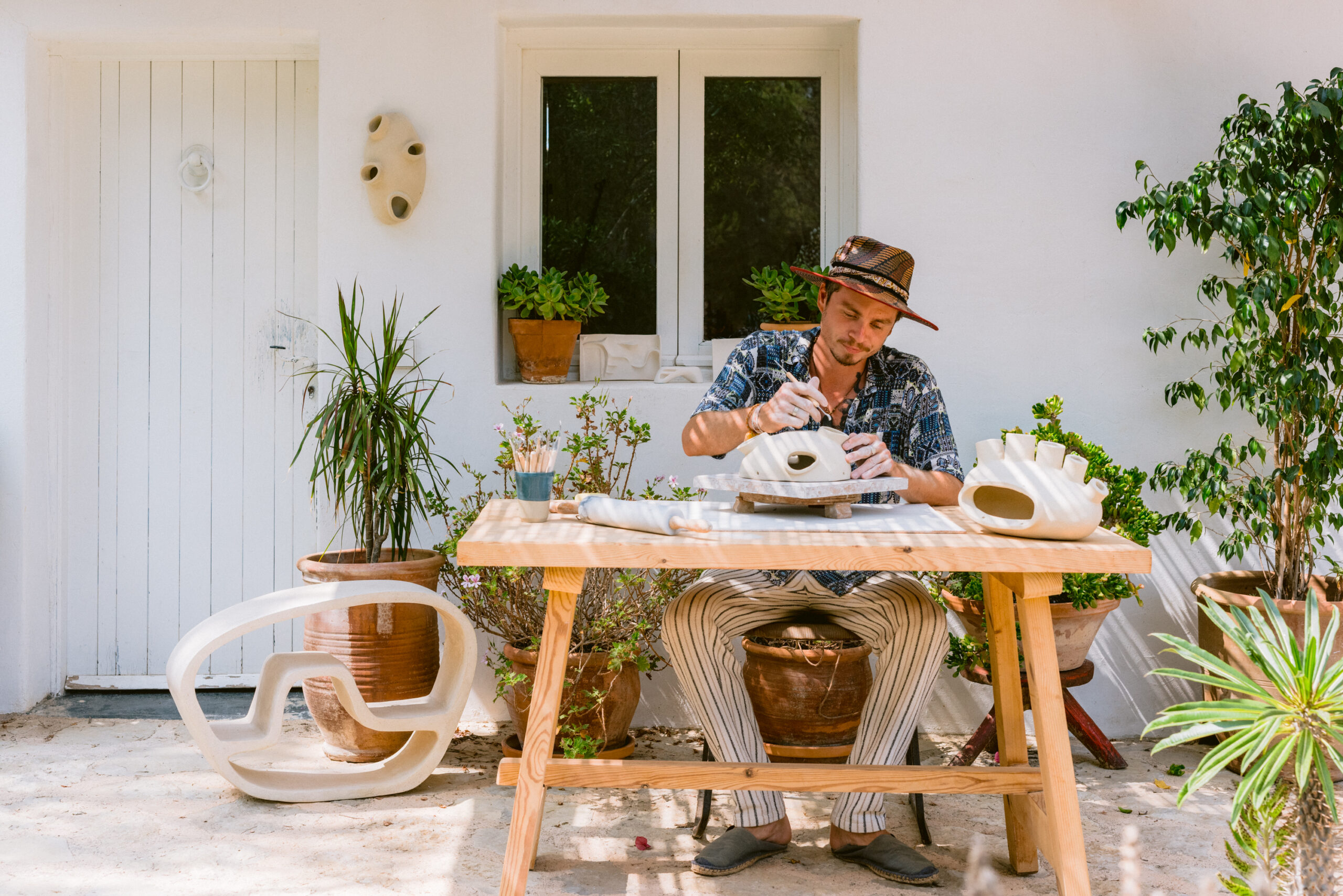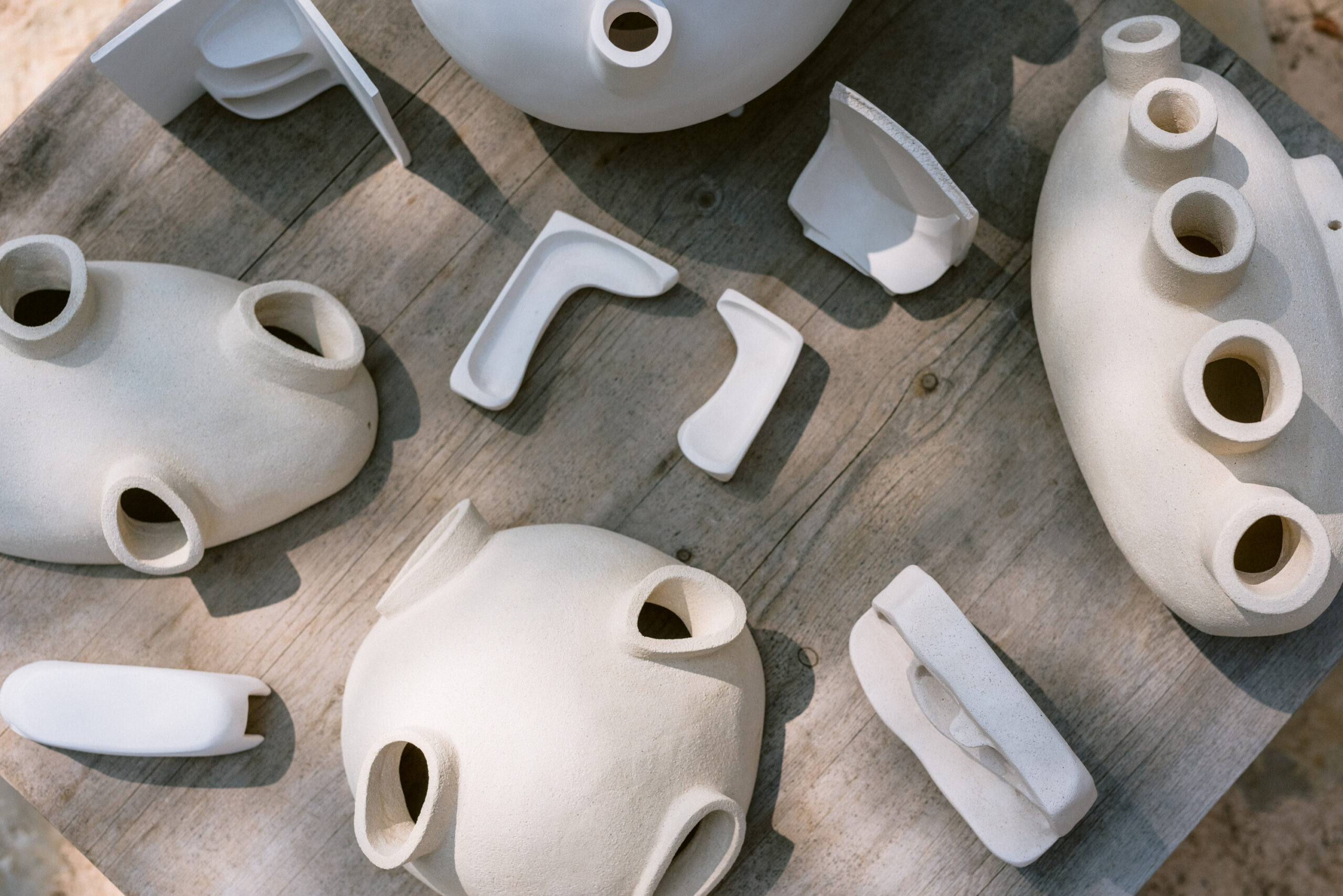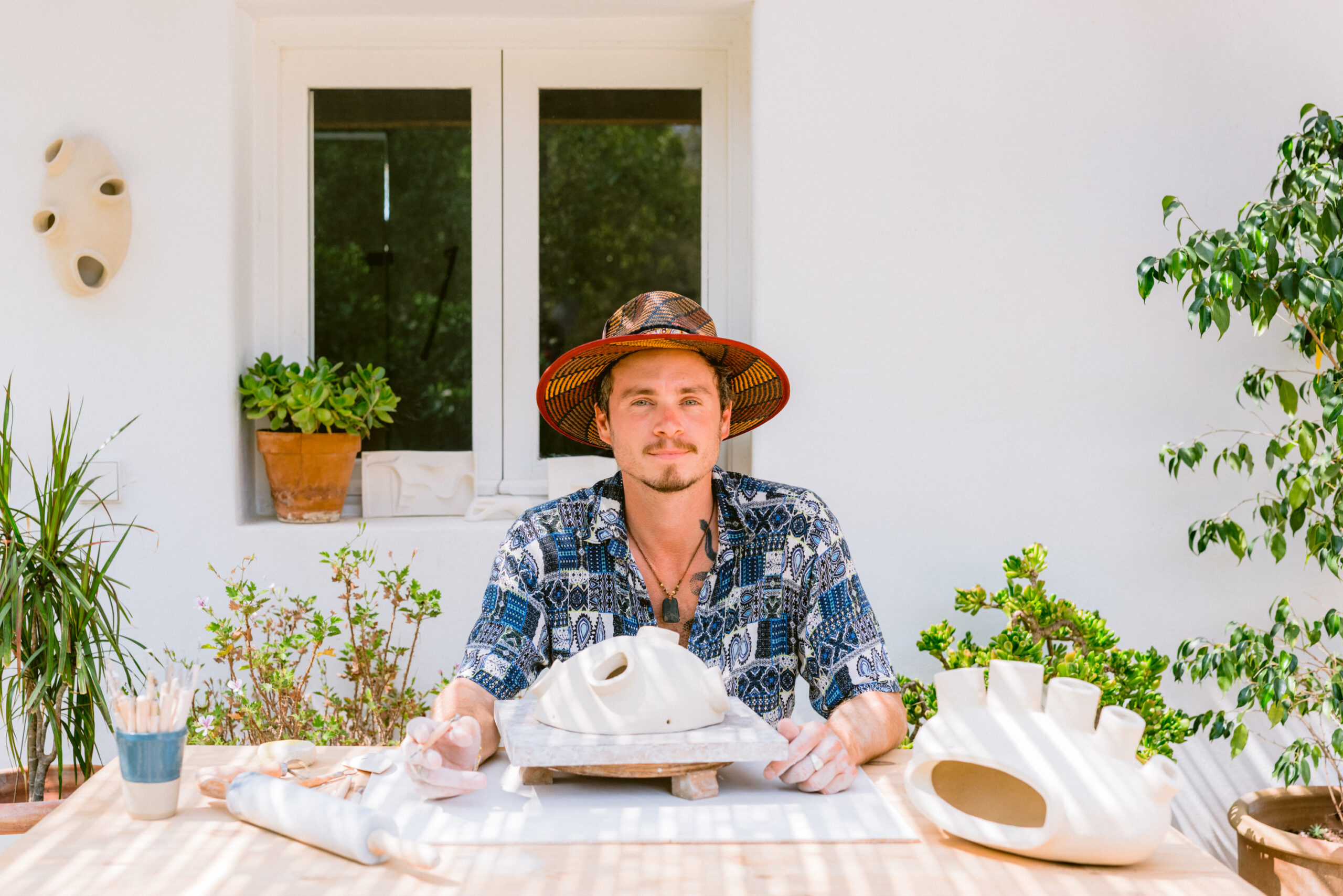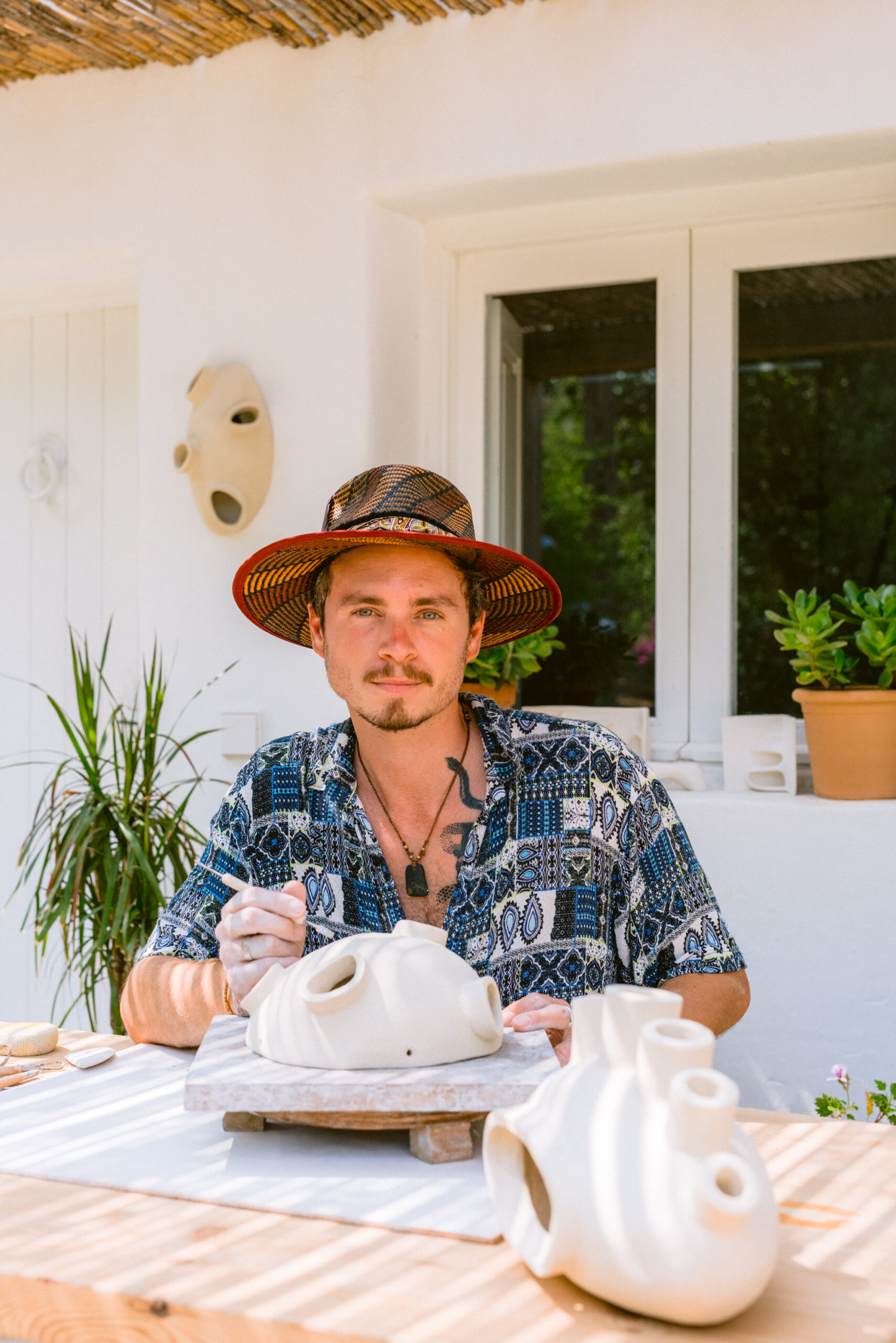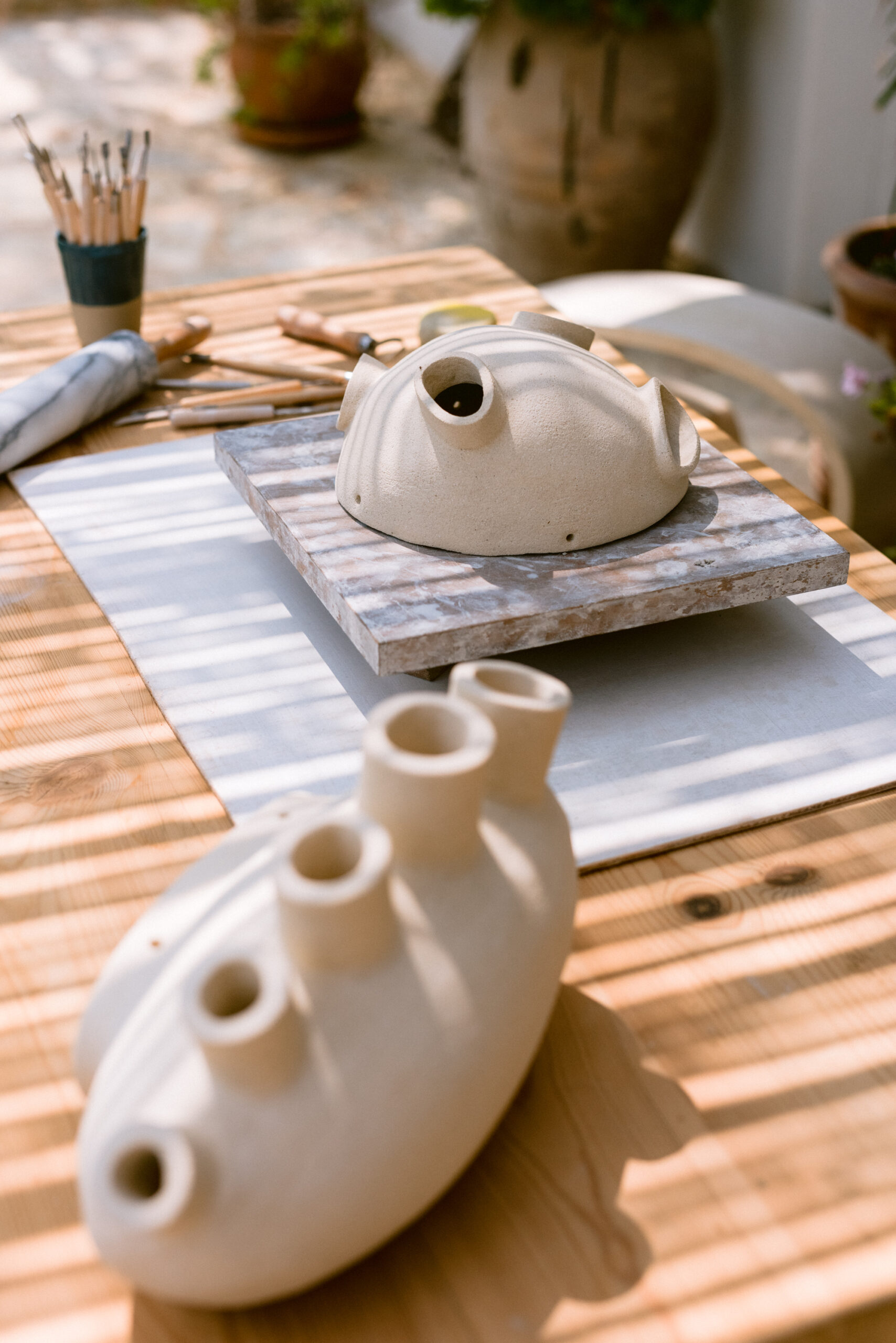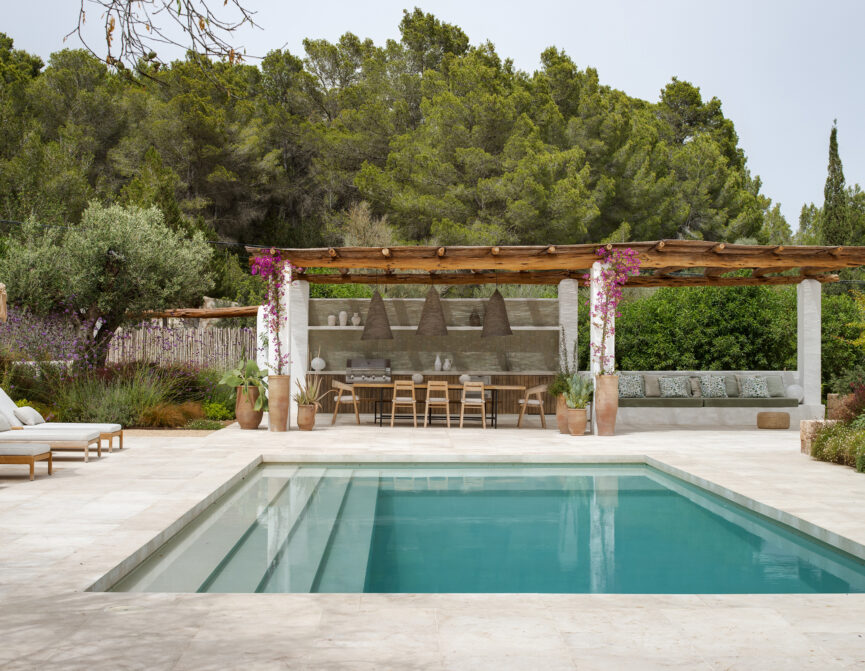The artist behind sculpture studio El Domo lets us in on his world of shapeshifting furniture creations that are as practical as they are playful.
Ask Clovis Neymo whether he considers his work to be sculpture or furniture and he’ll say both. “It’s the art of combining the practical with the aesthetic,” the French native decides. “The furniture merges with the walls, and the walls become the furniture so that the house itself ends up becoming a sculpture.”
Settling in Ibiza two years ago – after a fleeting visit to see family was extended due to the pandemic – Clovis got “stuck long enough” to realise he didn’t want to return to city life. Instead, he settled on finding a piece of land to build artistic residences. “A village of domes and sculptures where each visitor could participate,” he clarifies. “I started to build a few prototypes, but I finally realised that I was having more fun thinking about and decorating the interior than building the dome itself.”
Inspired by the fluid forms found in nature, Clovis began creating undulating installations under the name El Domo. With their curved, ununiform edges, his designs feel particularly at home within the island’s traditional fincas. In some cases, they look as though they could be part of the original fabric of these rustic buildings.



More recently, Clovis’ work has branched out to include standalone shelving and clay lamps in a variety of egg-like configurations. As well as commissions for private homes, you can catch a glimpse of his shelf sculptures at La Pandilla hotel in Las Salinas.
The materials Clovis uses are as natural as the shapes he carves. Having experimented with clay, aircrete, lime and cement, his current choice is plaster for its “malleability, drying time and the many possibilities it offers for interior sculptures”.
Each of Clovis’ pieces has a practical as well as a decorative purpose, with function and form always perfectly balanced. “I usually start with the practicality and once that is established and depending on the space I’m given to work with, I come and create around it,” he explains. “I’ll add the shapes, the curves and then change it again and again.”
The furniture merges with the walls, and the walls become the furniture so that the house itself ends up becoming a sculpture.
- Clovis Neymo
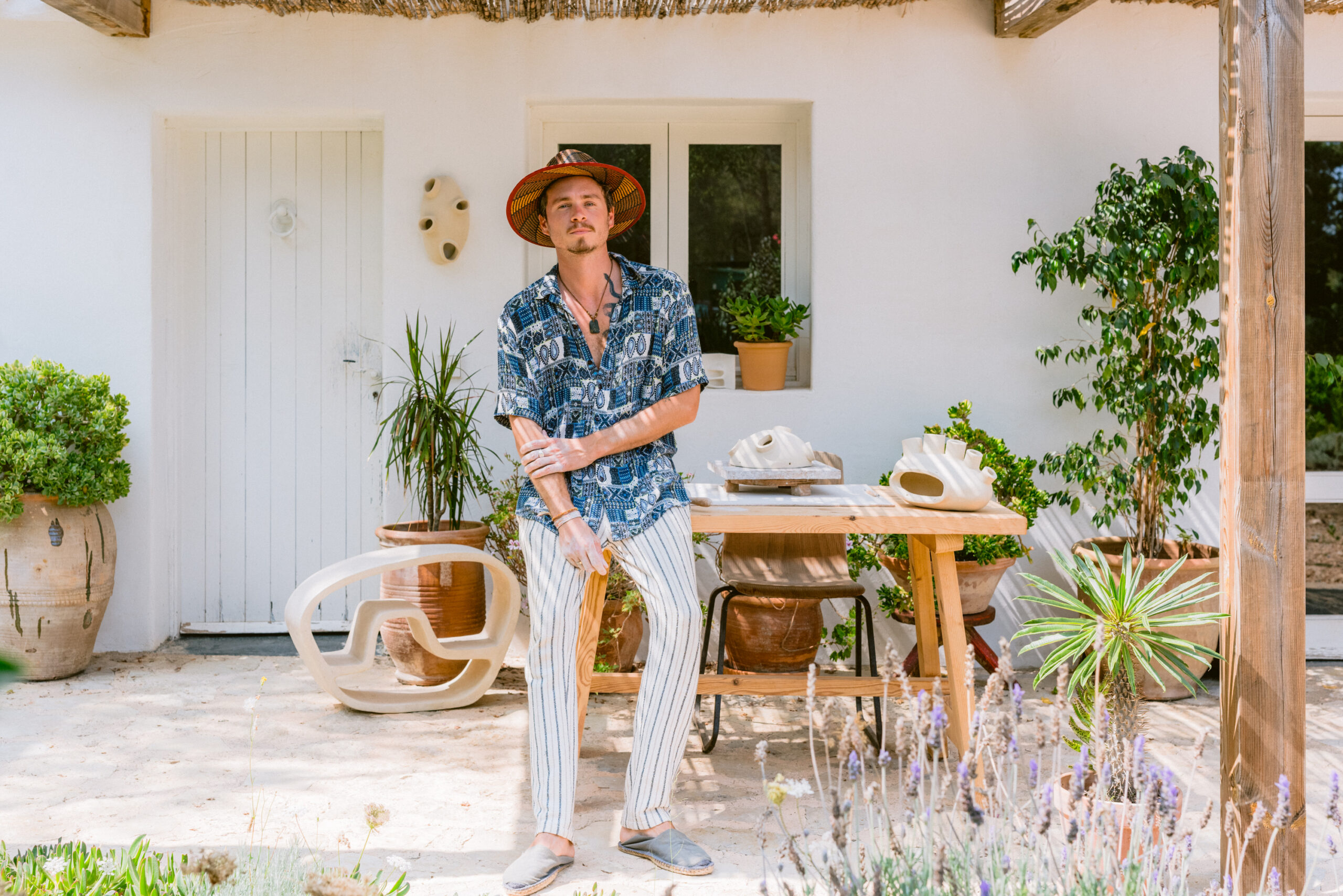
Growing up in Paris in a family of artists (his mother is ceramist Natalie Rich, co-founder of Galeria Tambien), Clovis’ talents for architecture were nurtured from a young age. An early source of inspiration was the sculptor, ceramicist and artist Valentine Schlegel, whose book Je Dors, Je Travaille Clovis found lying around at his parents’ house. Others include architects Javier Senosiain and Jacques Couëlle and the sculptor Pierre Szekely.
Much like the creations of all of the above, curves and domes appear frequently in Clovis’ body of work. “I enjoy the mix and contrast of these organic shapes,” he notes. “They’re natural forms, which break the linear codes usually found inside homes.”

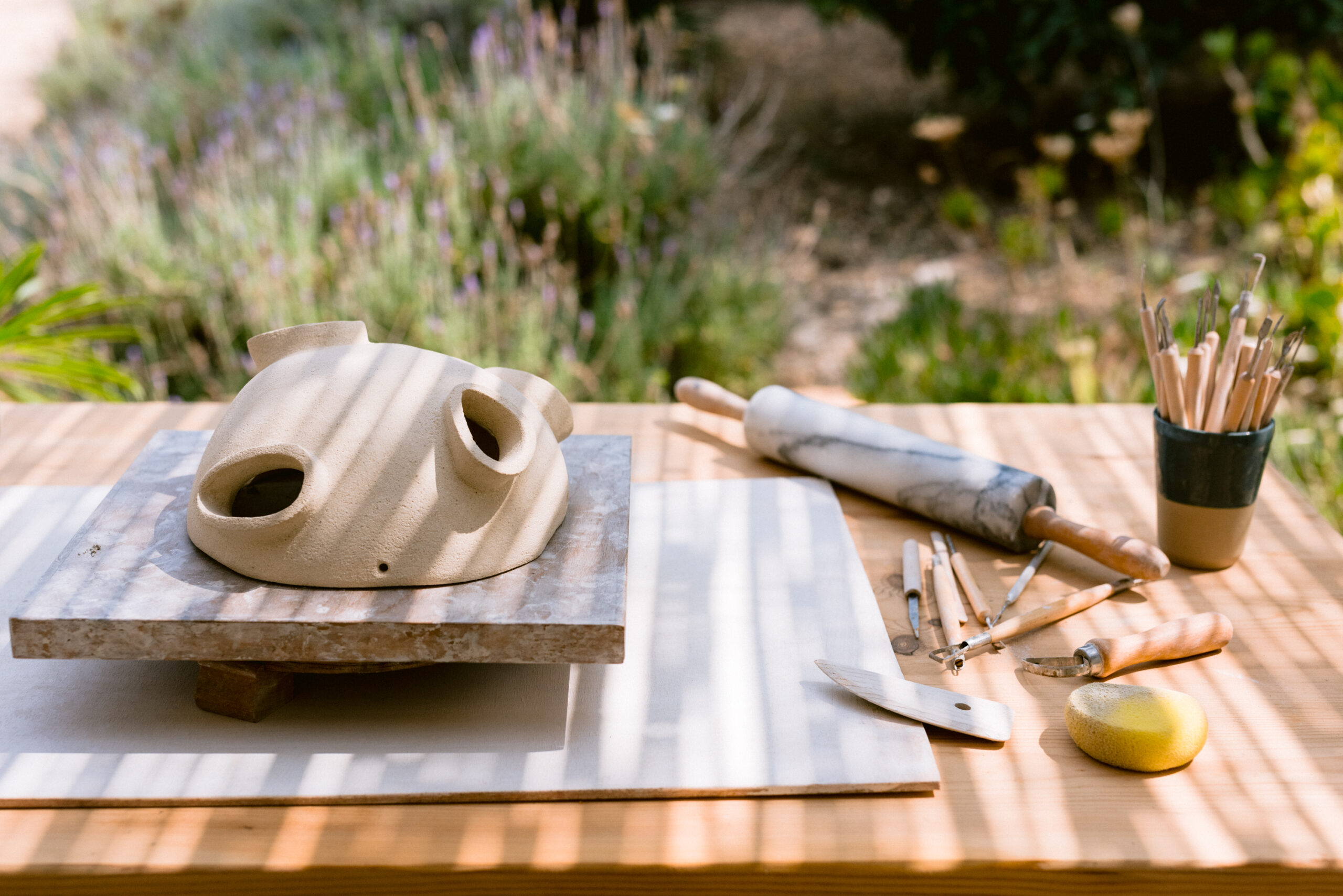
It’s this feeling of subverting expectation – of breaking the mould – that’s another guiding force for Clovis, who wants us to physically engage with his pieces. “I would like people to be able to interact or even, eventually, live inside my sculptures,” he muses. “The sculpture village project is still on my mind, and I hope to have the opportunity to realise this dream one day.”


